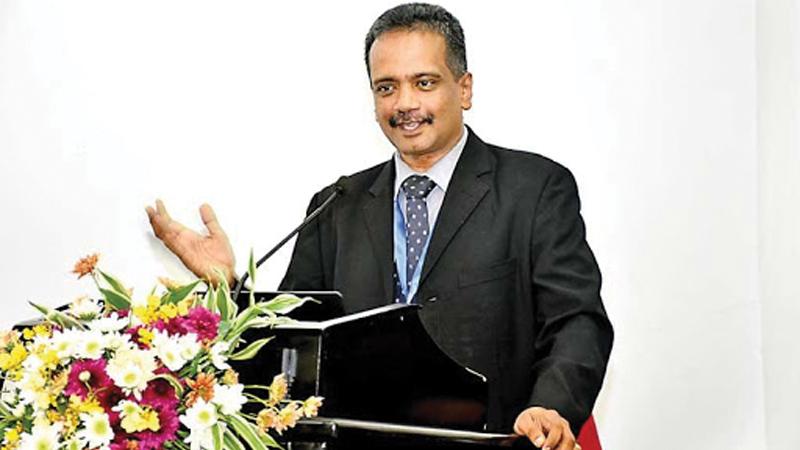
The government’s policy directive to create a ‘Green Sri Lanka with Sustainable Solutions to Climate Change’, is laudable. However, the operational procedure to achieve the long term goal in the agriculture sector is questionable, if not impossible.
This is why the decision to ban synthetic fertiliser imports and move completely to the use of organic fertiliser in crop production has drawn many criticism from various sectors, more importantly the practitioners, Senior Professor, Department of Crop Science Faculty of Agriculture, University of Peradeniya Prof. Buddhi Marambe told the Sunday Observer Business on Friday.
Addition of organic matter or fertiliser and compost coupled with inorganic fertiliser, to provide required plant nutrients while ensuring soil conditioning and sustained release of nutrients have been advocated for decades by the Department of Agriculture (DOA) and other crop research institutes.
The Integrated Plant Nutrient System (IPNS) coupled with Integrated Pest Management (IPM), where synthetic fertiliser and pesticides, and organic amendments are an integral part, have proven beyond doubt to provide the maximum productivity under Sri Lankan conditions through many years of research and field experience.
Hence, if this decision to ban the import of fertiliser continues (without considering pesticides), then Sri Lanka will have to look for technologies that we have never tested or used small or large scale to-date or to find sources of organic matter and invent technologies to provide nutrients at the correct stage to crops. We are not talking of isolated land parcels, but the whole country where agriculture includes about 40% of total land (2.3 million hectares) in Sri Lanka. Most organic fertiliser used in Sri Lanka contains about 5% or less Nitrogen (N) as compared to 46% of N in urea.
This indicates that to provide N needed for a crop, there is a need to apply organic fertiliser at rates of 9 to 10 times to that of urea.
The question is that if such effective technologies are available in the world to ensure nutrients for large crop extents with lower quantity of organic fertiliser, why is that the organic share of total agricultural land in the world rests at 1.5% in 2019 (it was 1.6% in 2018)? The Cabinet of Ministers decided recently to import organic fertiliser to support paddy farming in the Maha season (500,000 ha out of an estimated 800,000 ha) and about 600,000 ha of other food crop production. There is no indication on what course of action to be taken on tea, coconut, rubber, etc. However, understanding the dangers of importing organic fertilizers, it seems that the government has reversed the decision to import organic fertiliser.
This is a welcome move. However, at least to provide the N and potassium requirement, natural mineral materials may be imported to fortify organic fertiliser produced in Sri Lanka or used directly for crop production in liquid or solid forms. This process, however, is not very clear as for now. Inorganic fertiliser imports always require an import permit from the National Fertiliser Secretariat (NFS) of the Ministry of Agriculture. However, organic fertiliser imports to Sri Lanka are under the purview of the Plant Protection Act (PPA) No. 35 of 1999 and such import permits can only be issued by the Director General of Agriculture (DGA) or a designated authority of the DGA.
Despite all these, we now learn that a consignment (three containers of liquid and solid organic fertiliser) have landed in Sri Lanka without any import permit issued by the DGA. This is a very serious situation and the country should not encourage or facilitate this at any cost, due to the following reasons:
Organic fertiliser of plant and animal origin, if not sterilised, are excellent carriers of plant pests and diseases, animal and human pathogens, and invasive alien species. Such imported material could also be contaminated with many radio-active substances, and residue of pesticides and antibiotics.
Imported solid organic fertiliser can carry larger quantities of heavy metals such as Cadmium (Cd), Lead (Pb), and Chromium (Cr), and Arsenic (As). These have been claimed by many medical professionals and scientists as causal factors of the Non Communicable Diseases (NCDs) in Sri Lanka. The maximum limits of heavy metals allowed in solid organic fertiliser are identified by the Sri Lanka Standards Institute (SLS 1704:2021). Hence, use of large quantities of such organic fertiliser to support the nutrient needs of crops, would enrich our soil with heavy metals at unprecedented levels. Even in the next Maha season alone, this will be equivalent to more than 25 years of application of synthetic fertiliser on an annual basis.
Owing to such reasons given above, importation of organic fertiliser from one country to another has been regulated stringently not only in Sri Lanka but in other countries as well. Thus, if at all organic fertiliser importation is allowed in the future, threat to our ecosystems, especially the soil environment is enormous and irreversible.
